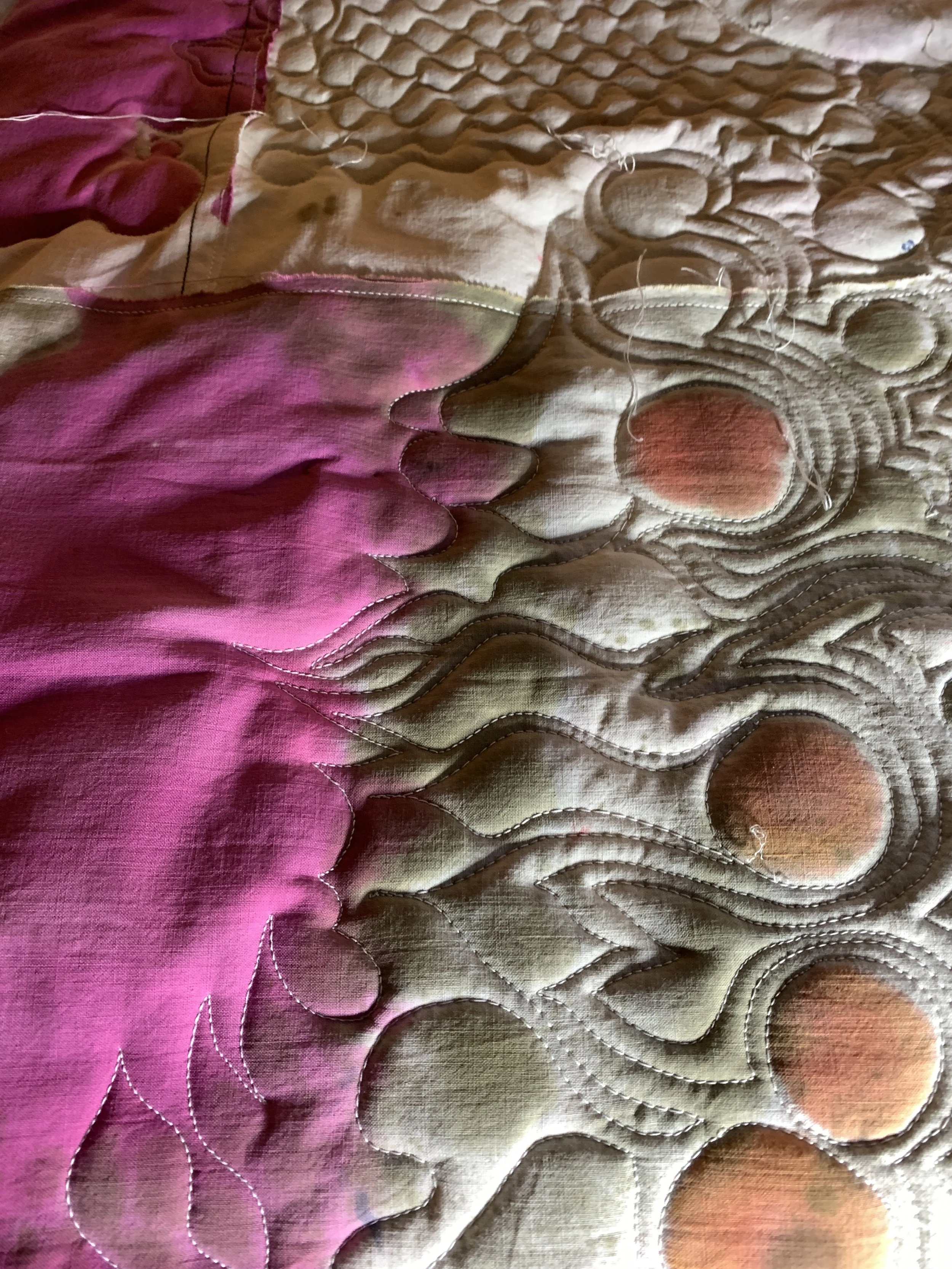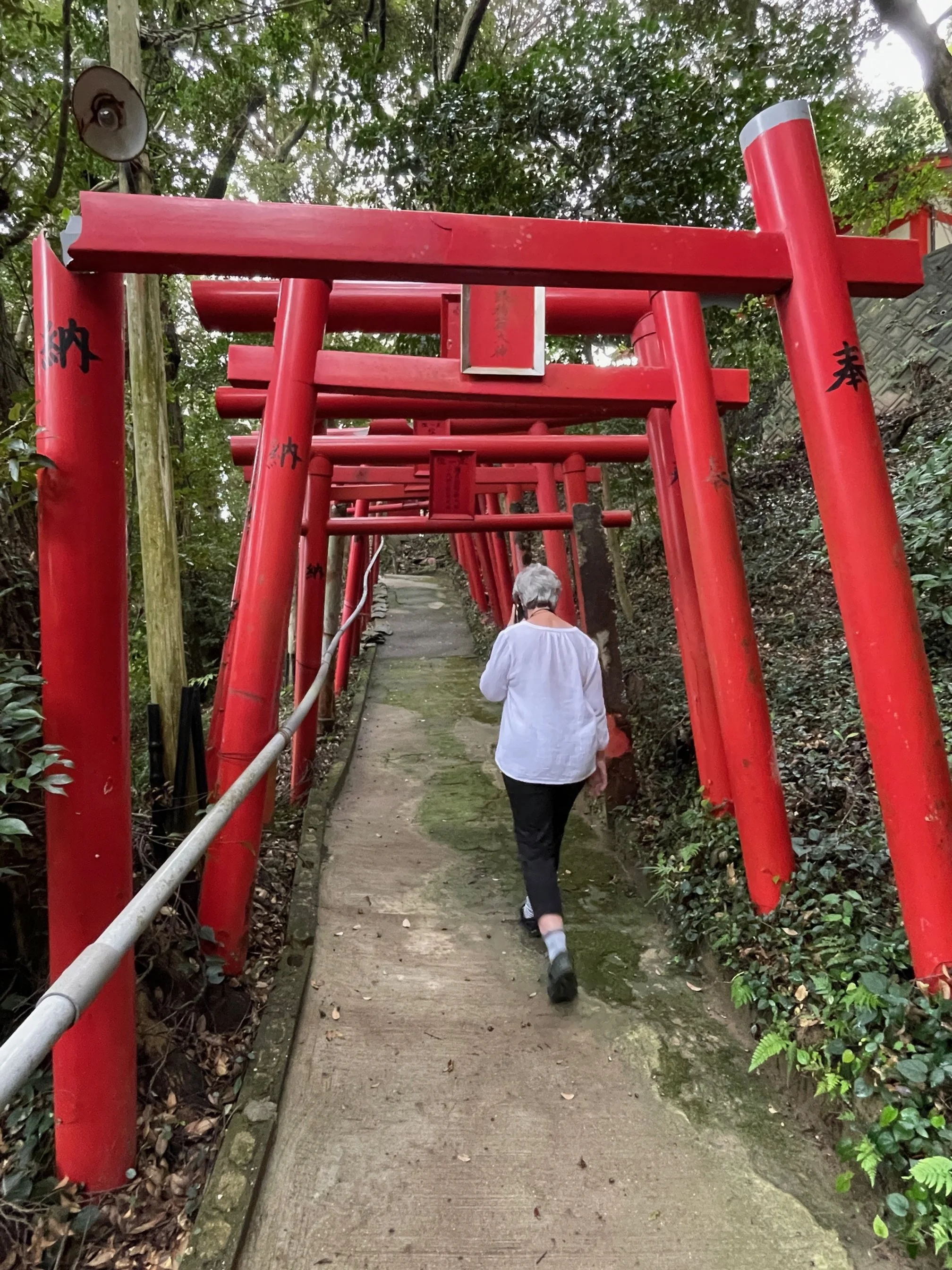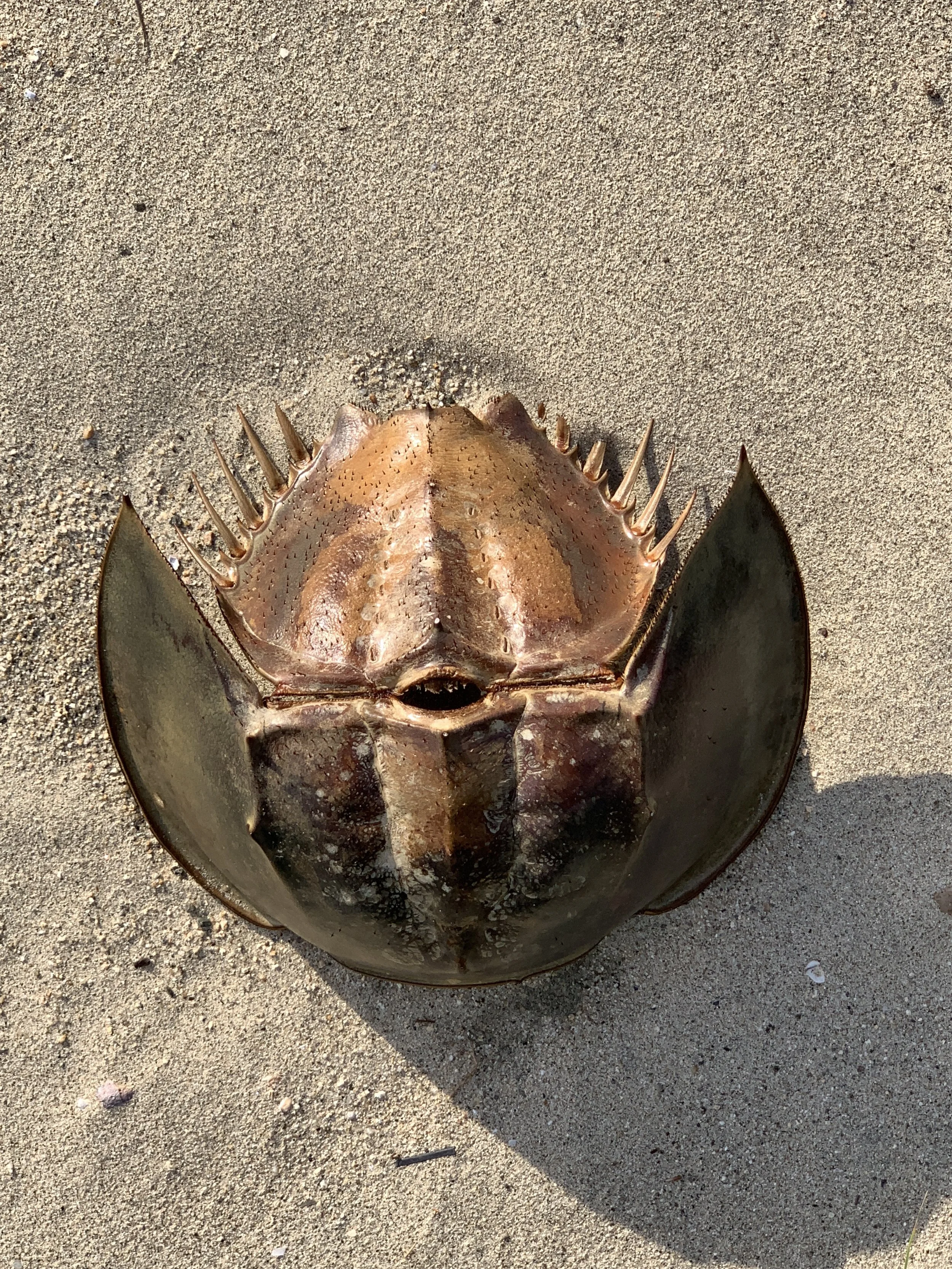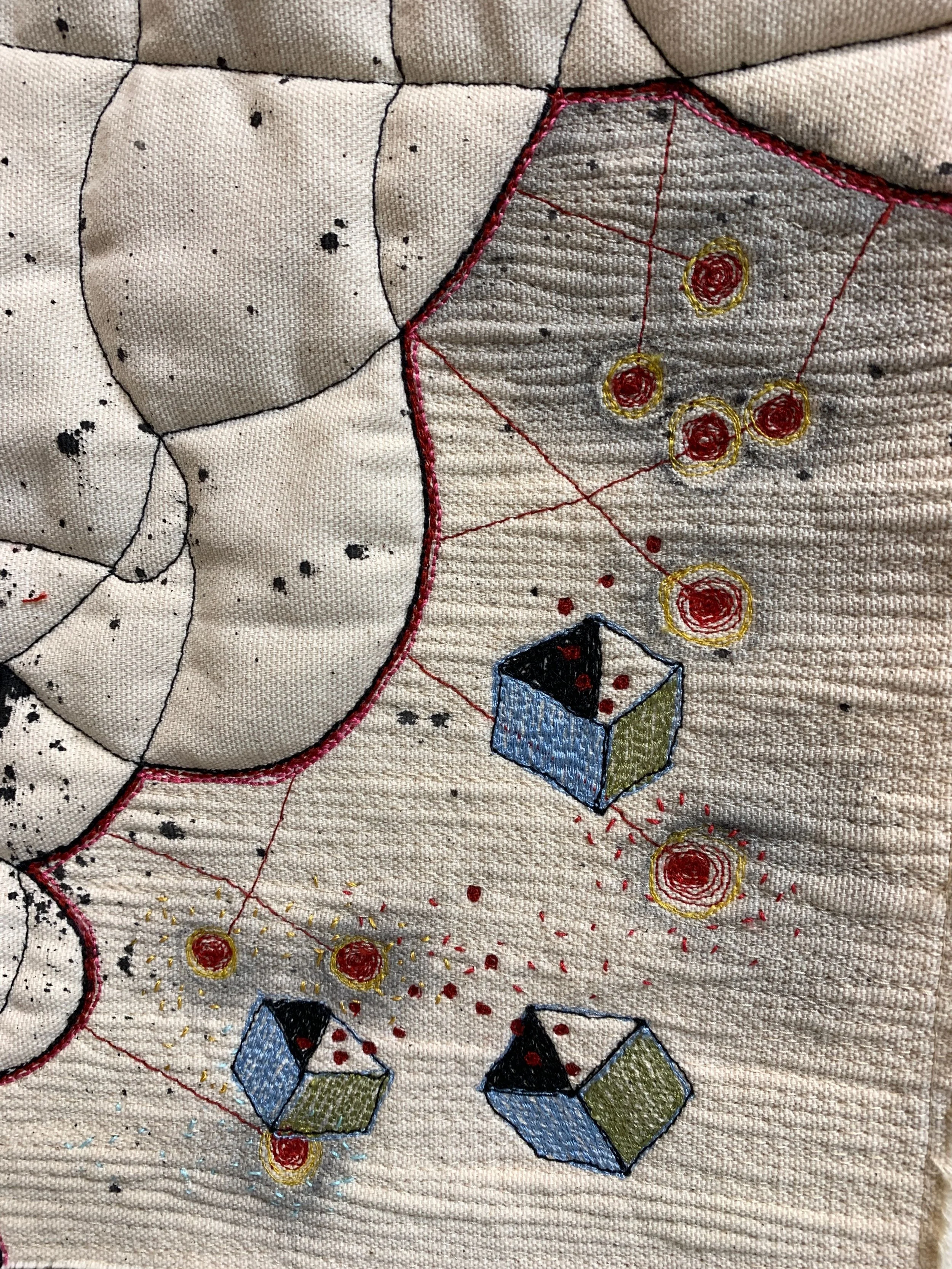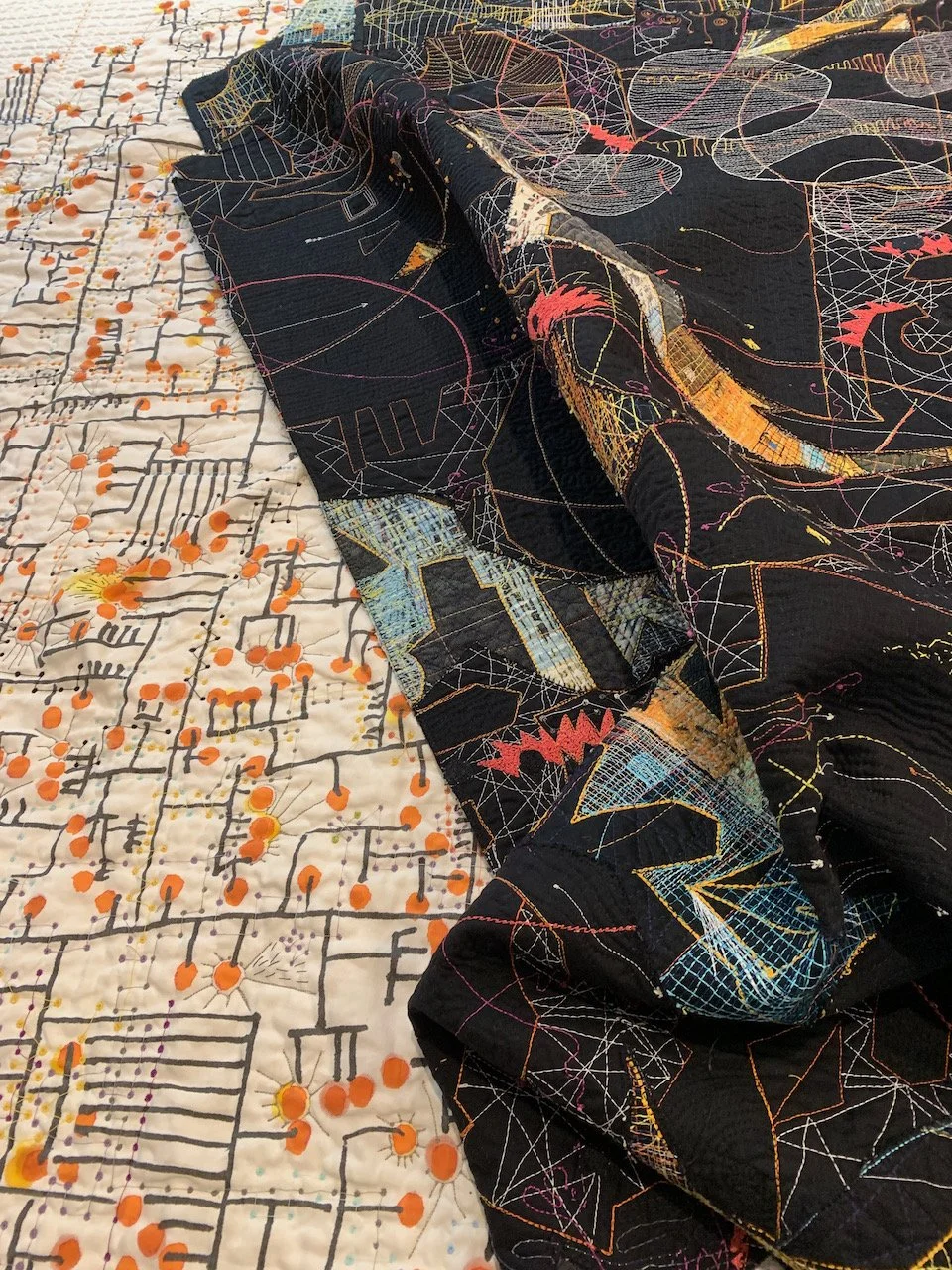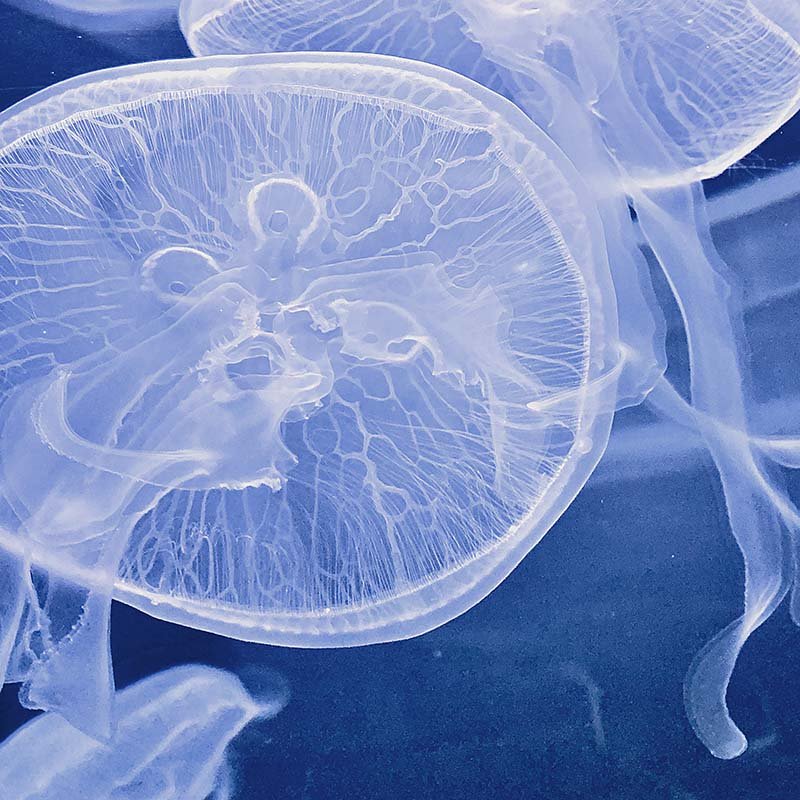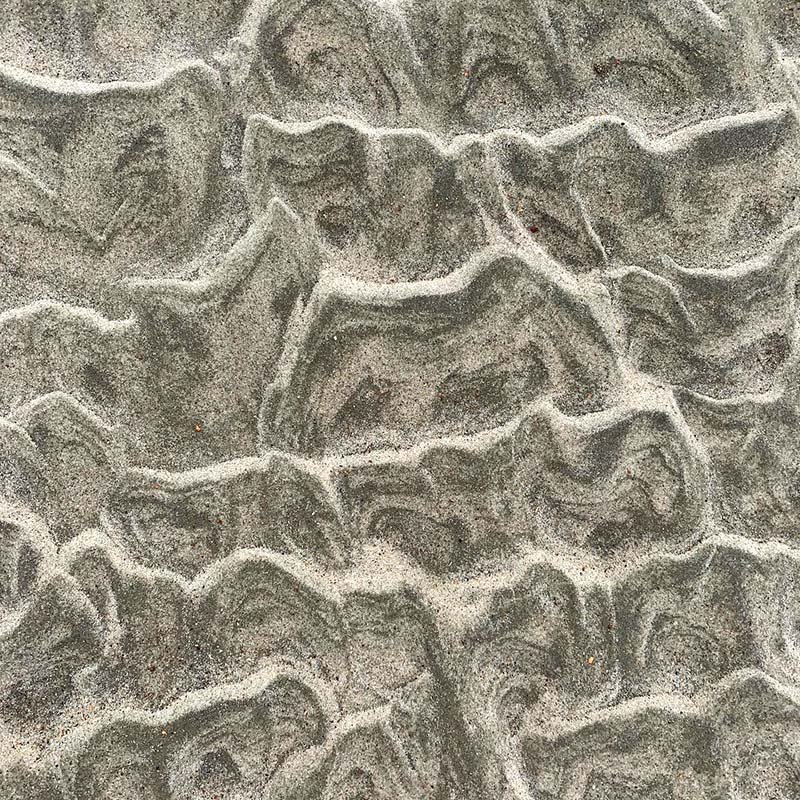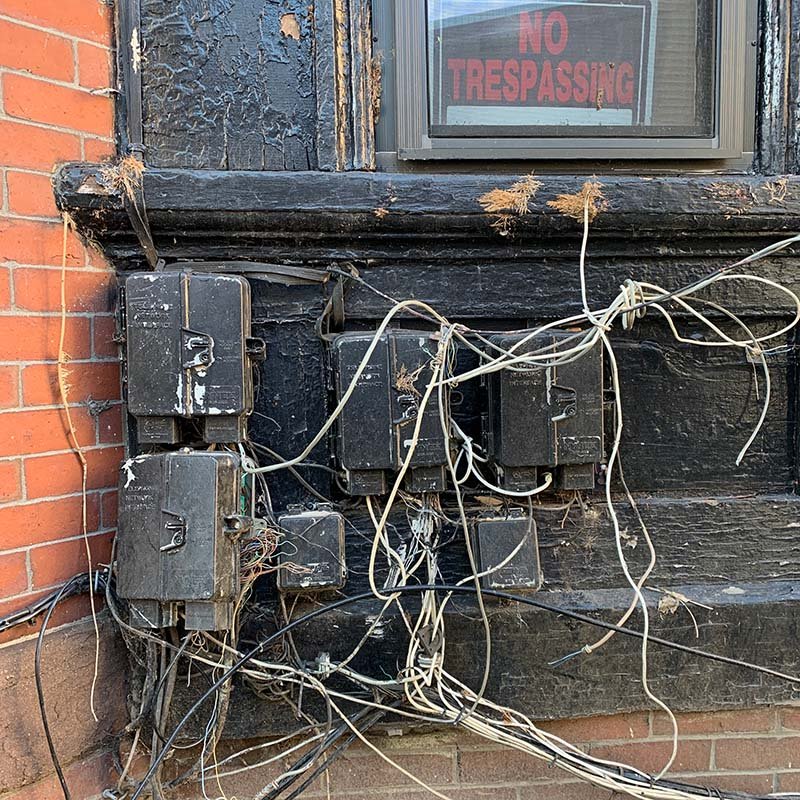I’m not known for my color expertise. I look fondly on work that bursts with saturated color and sigh most of the time. Rousseau, Gaugin, Pauly, Hilma af Klint, Butler and Kusama all stun and amaze me. As a designer I tend toward khaki, gray, muted pastels and black and white. As an artist black thread on light cloth just makes sense to me. If you are drawing lines you need to see them right?
Settling back into a daily practice after five weeks away turned out to be harder than I expected. My mind was so filled with inspirations that it was hard to sort through what my next step would be. I decided to just put colored pieces together. Primaries first.
Starting a piece without a specific idea is all about process. The underlying meaning doesn’t exist so I am only cutting, sewing, cutting, sewing and cutting again. I trust that at some point the compositions will tell me more than I think I know. There was a lot of cutting and sewing and cutting and sewing in these pieces. So much so that I thought that I might instead focus on this wonderful pile of scraps instead of the structured pieces that were being created.
As I started to put the scraps together nothing worked. The compositions were uncomfortable and the light yellow patchwork squares were distracting. It just made me feel weary. Though I wanted the piece to have a joyous exuberant burst it started looking like a carnival gone wrong. Blech! The next day I stitched the pieces together into random rectangles and then cut those into seven inch squares.
There is just something about cutting things up that clarifies things for me. New beginnings restart my thought process.
At all times I know that I am willing to throw it all into a bin if it doesn’t work out. It focuses me on the process rather than the product. And, sometimes, the pieces make more sense than the whole.
After reassembling the seven inch squares into a new composition I ended up with a stronger composition and a playground for stitch.
Second Thoughts, 32” x 25.5”, 2021, Paula Kovarik
There is color. There is energy and there is meaning in it (for me). I call it Second Thoughts for the way it made me doubt my direction. Second Thoughts for the way doubt can play havoc with progress. Second Thoughts for that moment in time that allows me to let go and start over.
Detail, Second Thoughts
Detail, Second Thoughts.






